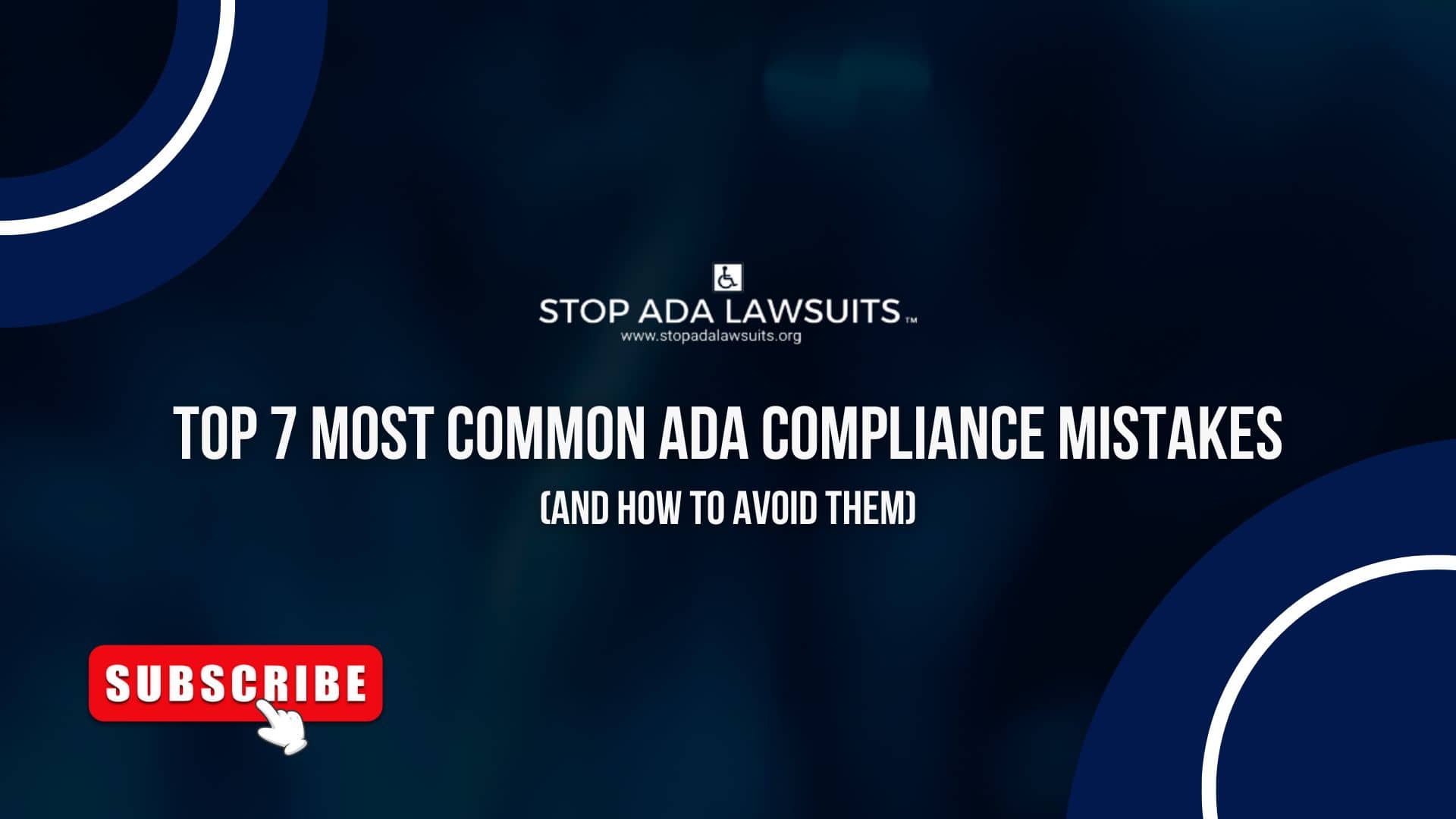
Ah, ADA compliance. That magical mix of rules and regulations designed to make the world a better place—while simultaneously keeping small business owners awake at night. If you’ve ever felt like the only thing standing between you and bankruptcy is a perfectly positioned handrail, you’re not alone. But fear not! Today, we’re breaking down the top 7 most common ADA compliance mistakes, with a touch of humor and just enough sarcasm to keep you entertained. Let’s dive in!
1. The Bathroom Stall of Doom
Picture this: you’ve spent thousands remodeling your restroom, and it looks like something out of a home improvement TV show. But uh-oh! The toilet paper dispenser is 2 inches too high. Congratulations, you’ve just invited a lawsuit.
How to Avoid It: Grab a measuring tape and the ADA guidelines (aka your new bedtime reading). Double-check that every fixture in your restroom meets the exact specifications. And yes, “exact” means within millimeters. Consider it your contribution to the art of precision engineering.
2. The Mysterious Missing Signs
Who needs signs anyway? Apparently, everyone. Businesses without proper Braille signage might as well hang a “Sue Me” banner on their front door. Because if a customer can’t navigate your space, you’ve got a problem—and a plaintiff.
How to Avoid It: Invest in clear, tactile signs for restrooms, exits, and any other crucial areas. Make them so obvious that even a distracted goldfish could find its way around your business. Bonus points if you hire a designer who understands both aesthetics and ADA rules.
3. Parking Lot Purgatory
Think your parking lot is just a place for customers to leave their cars? Wrong. It’s also a minefield of potential ADA violations. A handicap space that’s too narrow or missing a van-accessible aisle is a lawsuit waiting to happen.
How to Avoid It: Hire a professional to mark your parking spaces. And no, your cousin who’s “really good at painting” does not count. Make sure the spaces are the right width, have proper signage, and meet all slope requirements. Because nothing screams “compliance” like obsessing over asphalt angles.
4. The Doorway Drama
Your beautiful, hand-carved mahogany door may look amazing, but if it’s not wide enough for a wheelchair, you might as well be guarding the gates to ADA hell.
How to Avoid It: Ensure all doorways are at least 32 inches wide when open. Test it with a large chair, a stroller, or even a shopping cart. If you’re feeling fancy, throw in some automatic doors. They’re not just compliant—they’re also incredibly cool.
5. Website Woes
Think the internet is a free-for-all? Think again. If your website isn’t screen-reader friendly or lacks alt text for images, you’re practically begging for a lawsuit. And no, saying “I’m just a small business owner” won’t save you.
How to Avoid It: Invest in web accessibility tools. Make sure your website can be navigated with a keyboard and has captions for videos. Pretend your site is being used by someone who’s never touched a computer before. If they can use it, you’re good to go.
6. The Ramp Riddle
No ramp? Big problem. A ramp that’s too steep? Bigger problem. A ramp that leads nowhere? Okay, now you’re just trolling.
How to Avoid It: Follow ADA guidelines for slope, width, and handrails. Bonus tip: Place your ramp somewhere practical. A ramp leading to a dead end is not just non-compliant—it’s downright confusing.
7. Restroom Roulette
Oh, the humble restroom. Did you know that even the placement of your soap dispenser can make or break your ADA compliance? One poor soul got sued because their soap dispenser was “out of reach” for wheelchair users. Yes, soap.
How to Avoid It: Make sure everything in your restroom is within reach—soap, paper towels, even the light switch. If you’re feeling overwhelmed, hire a consultant. They’ll turn your bathroom into an ADA masterpiece.
Final Thoughts: Compliance Is King
While we’ve had a little fun here, ADA compliance is no joke. Accessibility isn’t just about avoiding lawsuits; it’s about creating a space where everyone feels welcome. So, measure twice, fix once, and maybe keep your lawyer on speed dial…just in case.
Remember, a little effort now can save you a lot of headaches (and money) later. And who knows? You might just become the poster child for ADA compliance. Or at least avoid being the next cautionary tale!
